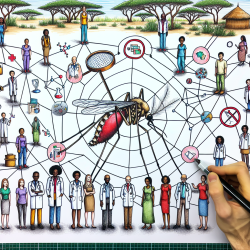Introduction
In the world of nature, the intricate designs and patterns found in living organisms often hold secrets to their survival and functionality. One such discovery is the relevance of Murray’s Law to the circulatory systems with tidal flow, as demonstrated by Lepidoptera. This fascinating insight not only broadens our understanding of biological systems but also offers practical implications for various fields, including speech-language pathology and therapy services like those provided by TinyEYE.
Understanding Murray’s Law
Murray’s Law describes the optimal branching architecture of bifurcating tubes, predicting the morphology of vessels in many organisms. Originally applied to blood flow in mammals, this law has now been extended to the wing venation of Lepidoptera, a diverse order of insects. The study of over a thousand wings from 667 species of Lepidoptera revealed that veins above approximately 50 microns in diameter conform to Murray’s Law, optimizing fluid transport and structural support.
Implications for Practitioners
For practitioners in fields like speech-language pathology, understanding the principles of Murray’s Law can enhance the approach to therapy. Just as nature optimizes fluid transport and structural integrity, therapy sessions can be optimized by applying data-driven decisions and evidence-based practices. Here’s how:
- Data-Driven Decisions: Utilize data and research to guide therapy practices, ensuring that interventions are grounded in scientific evidence, much like the optimization seen in nature.
- Customization: Just as different species of Lepidoptera exhibit variations in wing venation, therapy should be tailored to meet the unique needs of each child, considering their individual strengths and challenges.
- Efficiency and Effectiveness: By understanding and applying principles similar to Murray’s Law, practitioners can enhance the efficiency and effectiveness of therapy sessions, ensuring optimal outcomes for children.
Encouraging Further Research
The findings from the study of Lepidoptera’s wing venation encourage further exploration into the universality of Murray’s Law across different biological systems. Practitioners are urged to stay informed about the latest research and consider how such insights can be integrated into their practice. Continuous learning and adaptation are key to providing the best possible care and outcomes for children.
Conclusion
The study of Lepidoptera’s wing venation offers a glimpse into the universal principles that govern biological systems. By understanding and applying these principles, practitioners can enhance their skills and improve therapy outcomes. Just as nature finds balance and optimization, so too can we find ways to optimize our approaches to therapy and care.
To read the original research paper, please follow this link: Lepidoptera demonstrate the relevance of Murray’s Law to circulatory systems with tidal flow.










